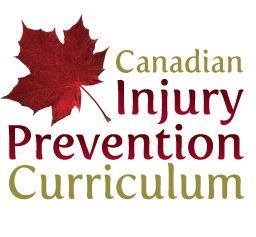Projects and Accomplishments
Projects
Credibility Guidelines and Checklist Resource for Community Professionals (2017)
Judging the credibility of injury prevention information can be challenging, given the vast amount of information available on the internet today. Intended for use by injury prevention professionals or others working in community-based organizations professionals, this guide useful in assessing available injury prevention information for credibility, and when using existing information or developing new resources in injury prevention.
Canadian Injury Prevention Curriculum
Canadian Injury Prevention Resource
The resource can be downloaded as a complete PDF, suitable for printing, or in individual sections with smaller file sizes, suitable for online reading or download.
Complete version (PDF, 21 MB)
Section 1 - Introduction (PDF, .75 MB)
Section 2 - Canadian Evidence Informed Practice Model (PDF, 1.3 MB)
Section 3 - Key Determinants of Injury (PDF, 3.6 MB)
Section 4 - Injury Topics and Emerging Trends (PDF, 2.4 MB)
Accomplishments
The CCCIP has supported the development of a critical mass of injury prevention and control stakeholders.
Examples include:
- The development of the Canadian Injury Prevention Curriculum (CIPC). Funded through the Population Health Fund of Health Canada, the curriculum was launched in June of 2004. This three-day training programme for health and other professionals conveys how to effectively develop, implement and evaluate injury prevention programmes. It provides standardized training on the epidemiology of injury and on proven strategies for managing this health threat. Initially, twenty facilitators were trained to deliver the curriculum across the country. Also, offered is the Canadian Injury Prevention Curriculum Facilitator Training Program which focuses on facilitator development.
- The development of the Canadian Injury Research Network (CIRNet). With limited funding from the Canadian Institutes of Health Research (CIHR), CIRNet developed a research needs paper that became a foundation for the work currently being undertaken with CIHR in developing injury as a multi institute strategic initiative and the development of C-AIR (Centres for Applied Injury Research).
- The movement towards biennial national conferences on injury prevention and control. The CCCIP in partnership with the Alberta Centre for Injury Control & Research held the first Canadian conference on injury in the fall of 2001. Another member, Plan-it Safe, was the host of the second conference in Ottawa, sponsored by three national NGO’s – Safe Communities, Safe Kids Canada and SMARTRISK. In November 2005, two other members – the Atlantic Network for Injury Prevention and the Government of Nova Scotia’s Office of Health Promotion Injury Prevention Coordinator co-hosted the third conference, sponsored by the original three partners along with a fourth – ThinkFirst Canada.
- The coordination of eleven stakeholder consultations in nine provinces in 2003 as part of a movement toward the development of a national injury prevention strategy. This was a partnership with SMARTRISK and Insurance Bureau of Canada. Results from these consultations form part of the recommendations in the document “Ending Canada’s Invisible Epidemic: The Case for a National Injury Prevention Strategy.”
- CCCIP members have been instrumental in work towards national or provincial surveillance strategies and provincial injury prevention strategies. They operate from an evidence base and ensure evaluation is integral to everything they do.
Communication and Collaboration
- On an ongoing basis, the CCCIP members have partnered on research projects (e.g. sports injuries in youth) and share resources on many injury issue areas.
- National organizations, government departments and individuals have found the networks of CCCIP members to be an effective tool to gain information from a broad constituency or to disseminate information quickly to stakeholders across Canada. Knowledge translation efforts reach a broad range of people and enable people to know who to talk to for reliable information on evidence based approaches to injury reduction and evaluation methodologies when they are planning initiatives in any injury area.







